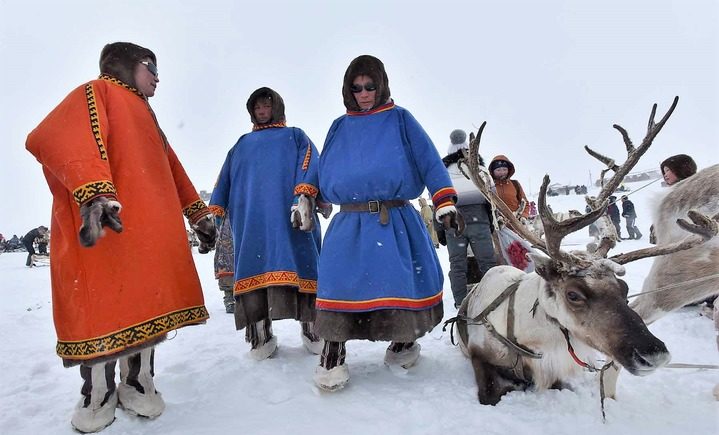#ARCTIC. #SIBERIA. THIS IS TAIMYR. Scientists from Novosibirsk and their American colleagues found mutations in genes of Siberian aborigines that affect lipid metabolism, that is, the process of splitting, digesting, absorbing, transporting and accumulating fats in the body. Scientists made a discovery after studying DNA samples of the Yakuts and Nganasans, and the results of the studies were confirmed on the biomaterial of Siberians of 17 other ethnic groups.
As explained at the Institute of Cytology and Genetics of the Siberian Branch of the Russian Academy of Sciences, the results of the study explain the fact that representatives of indigenous ethnic groups have a very low level of low-density lipoprotein (the so-called bad cholesterol), provided that they eat mainly fatty meat food: traditionally, the diet includes raw meat and fish, deer blood, raw offal.
Experts are sure that the genes they discovered are also involved in the activity of brown adipose tissue. At the molecular level, it may be responsible for the low levels of bad lipids in the blood. Brown fat becomes active at low temperatures, it begins to intensively generate energy to warm a person and needs fatty acids and glucose for this, which serve as fuel.
People with active brown adipose tissue have lower levels of both total and bad cholesterol, while they have higher levels of good cholesterol – high-density lipoprotein. And if it is cold around for quite a long time, brown fat can constantly require fuel, that is, continuously burn a lot of lipids.
Also among the typical physiological features the indigenous people of Siberia is an accelerated metabolism and an increased level of the thyroid hormone thyroxine. Scientists note that this may also be due to the genes they discovered through the mechanisms of the brown fat work. The fact is that thyroxine makes brown adipose tissue active, and if the release of energy in it is increased, this requires increased nutrition, which can cause a rapid metabolism.
This adaptation mechanism also easily becomes a risk factor if the lifestyle of indigenous peoples is changed to another one and more carbohydrates appear in the diet. As a result of such changes, a shift in metabolism is observed. Weight becomes excessive, type 2 diabetes mellitus and hypertension appear. Scientists hope that future research will be able to find a solution to this problem.
In the SB RAS Institute of Cytology and Genetics population ethnogenetics laboratory, there are DNA samples of the Nganasans and other peoples genuine representatives, which are becoming less and less in the process of merging with each other including Evenks, Nenets, Khanty, Teleuts, Komi, Selkups, Dolgans and others. For all the samples stored in the database, all the necessary information has been collected: gender, age, some diseases. This is protected personal data that is not used anywhere else but research.
Earlier we reported that an exhibition of Dolgan parkas was opened in Levinskie Peski, and Taimyr photographers showed the world through the eyes of indigenous peoples.
Follow us on Telegram, Instagram and Facebook.
Text: Ekaterina Maksimova, Photo: Maxim Shapovalov, Slava Shut, Andrey Burmistrov, Alexander Haritonov, Marina Peshkova, nazaccent.ru








